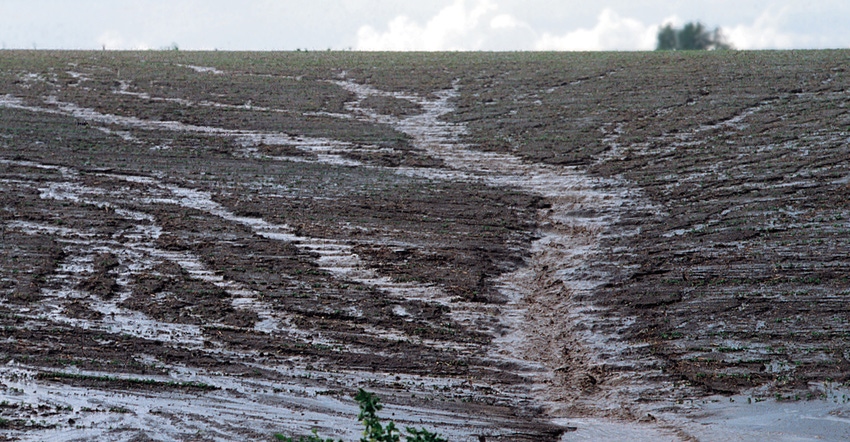September 29, 2017

By Laura Crowell
Harvest is the season when many farmers discover areas of ephemeral gully erosion that had been hidden by plant canopies. Typically, many farmers smooth those areas in the field with a tillage pass soon after harvest or in the spring before planting. However, Iowa farmers who participate in USDA programs will now be required to provide additional control of ephemeral gully erosion on their highly erodible fields, says state conservationist Kurt Simon.
Ephemeral gullies are the smaller ditches in fields that farmers often smooth with a disk before planting crops. Simon, who heads USDA’s Natural Resources Conservation Service in Iowa, says previous compliance was not an issue when fields contained only small areas of ephemeral gully erosion.
This change is in response to a recent Office of Inspector General report comparing compliance review procedures in several states. OIG recommended modifications to NRCS’ compliance review procedures to provide more consistency across the nation. Thus, Iowa NRCS has made compliance review procedure adjustments that might impact farmers.
Additional conservation practices
Since passage of the 1985 Farm Bill, farmers have been required to control erosion on fields that are classified as highly erodible. Each spring, NRCS conducts compliance reviews on a random selection of highly erodible fields to determine if erosion has been adequately controlled.
“Affected farmers will need to consider installing additional conservation practices to better control ephemeral gully erosion,” says Simon. A noncompliance ruling can affect benefits that farmers receive from USDA agencies in a number of ways — from Conservation Reserve Program payments to Price Loss Coverage.
Simon says NRCS employees will work closely with farmers to help them meet erosion-control requirements. He adds that farmers may not be expected to complete these changes immediately. If erosion control issues are identified during compliance reviews, producers may be given time to make adjustments and install needed conservation practices. Typical practices used to control ephemeral gullies include no-till farming, cover crops, grassed waterways and terraces.
Maintaining program eligibility
Iowa NRCS offers financial assistance to help farmers install or implement conservation practices across the state. Landowners can sign up for voluntary farm bill conservation programs on a continual basis.
Simon emphasizes the importance for farmers to meet these erosion control requirements so they will remain eligible for farm bill program benefits, including federal crop insurance premium subsidies. NRCS staff members are available to help farmers identify ephemeral erosion in their fields or where it may occur, and then assist them with applying the conservation practices that best fit their farming operations.
For more information, contact NRCS at your local USDA Service Center.
Crowell is the state public affairs officer for NRCS in Iowa, based in Des Moines.
You May Also Like




